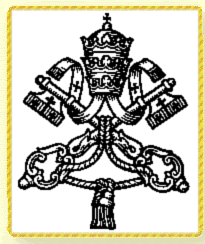Deep inside the Vatican, a white-haired nun dressed in a brown habit opens the door to a room full of computers. The whirring machines hold some of the mysteries of the Holy See, including photographs of the Vatican Secret Archives and of ancient illustrated manuscripts. No, this isn't a movie trailer for The Da Vinci Code. Our guide is Sister Judith Zoebelein, the editorial director of the Internet Office of the Holy See. She's showing off a small but potent Vatican data center, which bristles with servers and other high-tech gear.
It's no secret that the Vatican has a fantastic Web site. It brims with fine art and practical information about the Catholic Church. The site, www.vatican.va, which comes in six languages, was even nominated for a prestigious Webby Award a few years back. But little is known about the woman who is behind it. Sister Judith, a 57-year-old American, grew up in a middle-class household in the Hamptons on the eastern tip of Long Island. She and a handful of colleagues were Internet pioneers when, in 1995, they launched the Vatican Web site. Since then, she has greatly expanded the site, including images of art from the Vatican Museums, a powerful search engine, and videos of restoration projects.
Now Sister Judith is creating a second Vatican Web site, set for launch in the fall, that is aimed at bringing together the faithful so they can interact. Think of it as MySpace.com (NWS ) for Catholics. There will be personal news updates, e-learning programs, and areas set aside for families, young people, and parishes. Collaboration is key, and that should differentiate the site from others in its genre. "People will be able to find each other and work together online, and then go back and use what they have learned or done in their own communities," says Sister Judith.
WINDING PATH
The new site will likely boost visitor traffic, as well. The current Vatican site typically gets about 1 million unique visitors per month, though when Pope John Paul II died last April, it spiked up to 1.8 million U.S. visitors, according to traffic tracker Nielsen//NetRatings. That temporarily put it in the same league with the most popular religious destinations including Beliefnet, a multi-faith site, and the Mormon church's site.
How did an English major from a tony American beach town end up becoming the Internet nun? It was a winding path, but a search for meaning in life runs through it. After graduating from Hofstra University on Long Island, where she studied Irish drama, Sister Judith joined the Peace Corps and spent two years teaching English in rural Thailand. Later, back in the U.S., she studied to teach English as a second language. But meeting a group of nuns, the Franciscan Sisters of the Eucharist, rekindled her childhood Catholicism, and she joined the abbey in Meriden, Conn. "I was looking for something meaningful and eternal," she says.
As a member of the abbey, Sister Judith got assignments with social service agencies that landed her in Asia, Africa, and Latin America. Over the years, she took an interest in computers and set up computer networks and telecommunications systems in relief agency offices around the world. She was called to the Vatican in 1991 to help out with its computing chores. "She had the skills, and she was also very much an international personality -- thanks to all of her travel," recalls Mother General Shaun Vergauwen of the Franciscan Sisters.
Sister Judith identified the Web's potential shortly after it exploded on the scene in the mid-1990s. She and a small group of Vatican techies took the idea of launching a Web site to John Paul, who quickly gave them the go-ahead. It was a humble beginning: Sister Judith posted one Web page containing a single document, the Pope's 1995 Christmas Message. But the site expanded rapidly and now contains a huge storehouse of information -- not just for the faithful but for art lovers, historians, and tourists.
Two features stand out. For Catholics, the search engine is a powerful tool to help them explore their faith. Type in a keyword such as "forgiveness," and you'll get results organized around various sources, including the Pope, the Catechism, and the saints. For aficionados of Renaissance art, the site is a revelation because of its use of 360-degree photography of the Vatican's galleries and close-ups of artworks. Many of the Vatican's finest paintings are ceiling frescoes. The only practical way to see them close up is on the Web site. "This is an example of the Web providing an experience that can't be had in the real world," says Tiffany Shlain, founder of the Webby Awards.
Now, with the coming of the new faith-based community site, Sister Judith is satisfying an evangelical drive that she has felt since her Peace Corps days. For her, the Net is the ultimate way to reach millions of people and to connect them with their deity. "It's about something much bigger than myself, and it's also very Franciscan: You can touch it, you can change it, and you can touch people with it," she says.
While Sister Judith is quick to embrace the latest technological innovations, don't expect to see Vatican bloggers anytime soon. A blog is "so personal, such a mind dump," she says. On the Internet, the Vatican draws the line at self-indulgence. Pride, remember, is one of the seven deadly sins.
Wednesday, May 03, 2006
Subscribe to:
Post Comments (Atom)










No comments:
Post a Comment